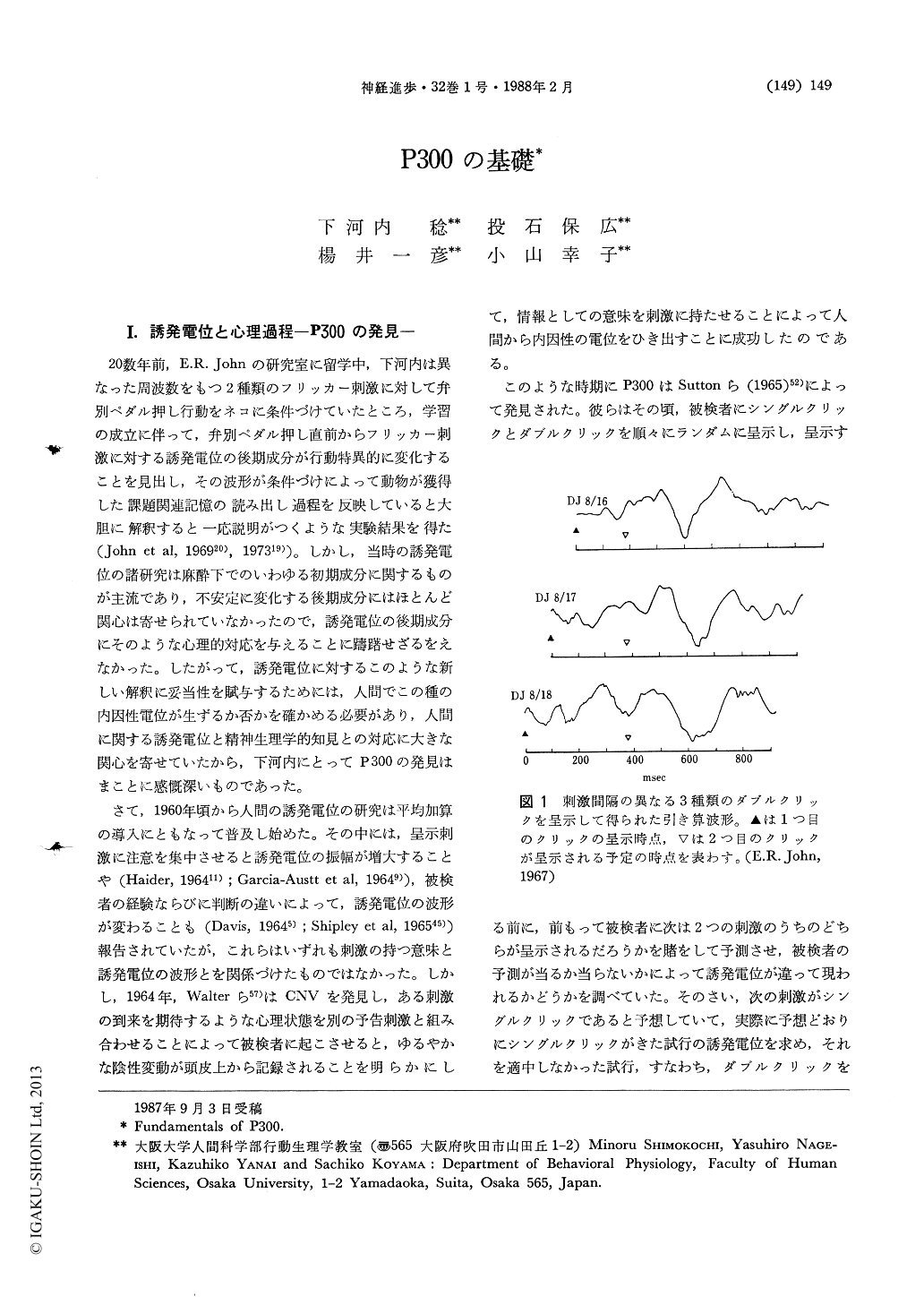Japanese
English
- 有料閲覧
- Abstract 文献概要
- 1ページ目 Look Inside
I.誘発電位と心理過程―P300の発見
20数年前,E. R. Johnの研究室に留学中,下河内は異なった周波数をもつ2種類のフリッカー刺激に対して弁別ペダル押し行動をネコに条件づけていたところ,学習の成立に伴って,弁別ペダル押し直前からフリッカー刺激に対する誘発電位の後期成分が行動特異的に変化することを見出し,その波形が条件づけによって動物が獲得した課題関連記憶の読み出し過程を反映していると大胆に解釈すると一応説明がつくような実験結果を得た(John et al,196920),197319))。しかし,当時の誘発電位の諸研究は麻酔下でのいわゆる初期成分に関するものが主流であり,不安定に変化する後期成分にはほとんど関心は寄せられていなかったので,誘発電位の後期成分にそのような心理的対応を与えることに躊躇せざるをえなかった。したがって,誘発電位に対するこのような新しい解釈に妥当性を賦与するためには,人間でこの種の内因性電位が生ずるか否かを確かめる必要があり,人間に関する誘発電位と精神生理学的知見との対応に大きな関心を寄せていたから,下河内にとってP300の発見はまことに感慨深いものであった。
さて,1960年頃から人間の誘発電位の研究は平均加算の導入にともなって普及し始めた。その中には,呈示刺激に注意を集中させると誘発電位の振幅が増大することや(Haider,196411);Garcia-Austt et al,19649)),被検者の経験ならびに判断の違いによって,誘発電位の波形が変わることも(Davis,19645);Shipley et al,196545))報告されていたが,これらはいずれも刺激の持つ意味と誘発電位の波形とを関係づけたものではなかった。しかし,1964年,Walterら57)はCNVを発見し,ある刺激の到来を期待するような心理状態を別の予告刺激と組み合わせることによって被検者に起こさせると,ゆるやかな陰性変動が頭皮上から記録されることを明らかにして,情報としての意味を刺激に持たせることによって人間から内因性の電位をひき出すことに成功したのである。
P300 component was first described by Sutton et al., and was shown to be an endogenous ERP relating to uncertainty about the nature of the forthcoming stimulus. Up to that time, human experiments had not demonstrated a relationship between the meaning or significance of a stimulus and the evoked potential. Since a number of experiments have been done for two decades on the nature of P300 especially by psychologist, it is now the most popular endogenous ERP to test cognitive function of normal human being as well as patient.
Typical experimental condition for the recording P300 is counting of or attending to infrequent stimuli within a series of frequent ones (oddball paradigm). P300 is recorded if a signal is detected, but not after a missed signal.

Copyright © 1988, Igaku-Shoin Ltd. All rights reserved.


